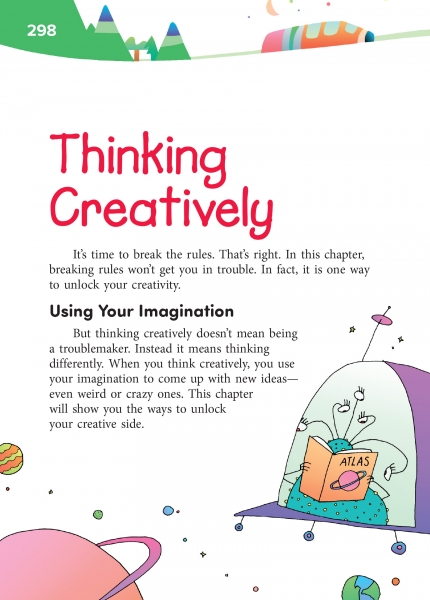Page 298 from

Start-Up Activity
Pose this riddle: "Ten people wait at a train station, and the train they are waiting for pulls up and stops. The doors open, but no one gets on. Why?" Take your students' many possible and creative explanations as to why this is the case. Finally reveal to them that no one gets on because it is a model train.
Even though the riddle has a specific solution, trying to solve it leads to many other interesting and creative possibilities. Help students understand that creative thinking works that way. Instead of seeking the one "right" answer, it seeks all possible answers. In doing so, it uncovers possibilities that no one might ever have predicted. (For example, what if it were a "train of thought" rather than a physical train?)
This chapter will give students specific strategies for developing their creative thinking.
Think About It
“Creativity is a habit, and the best creativity is the result of good work habits.”
—Twyla Tharp

